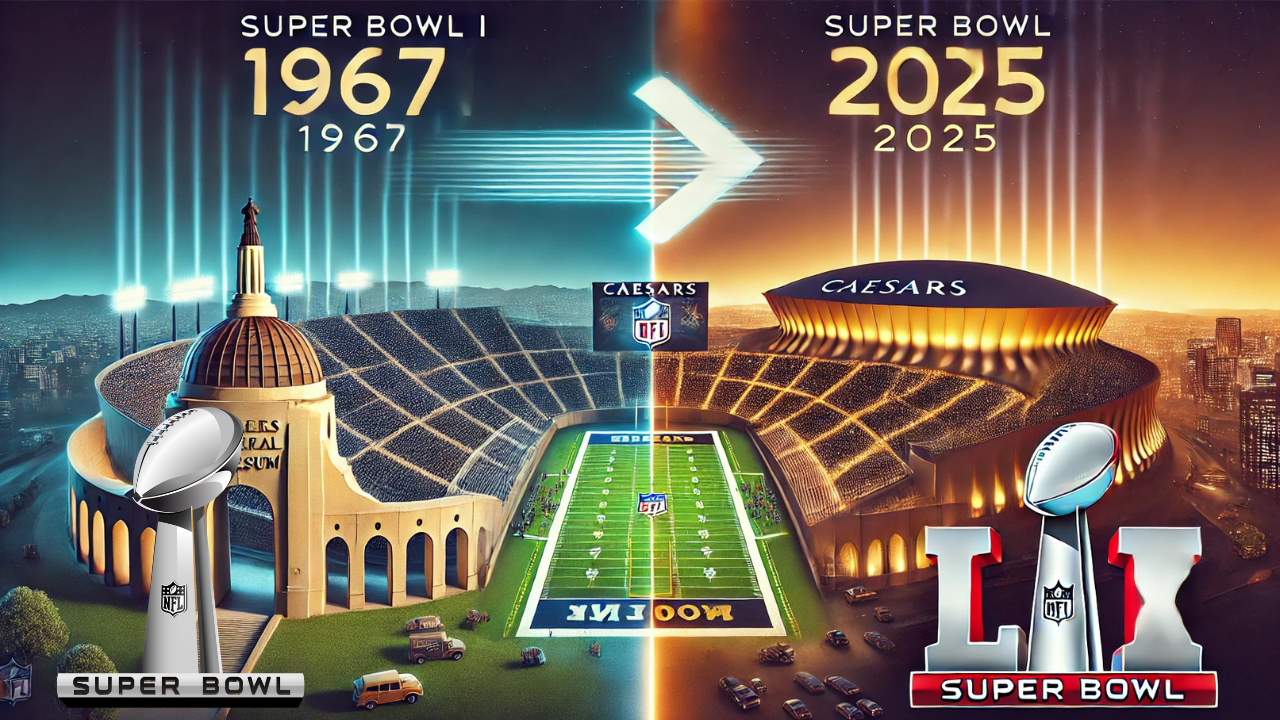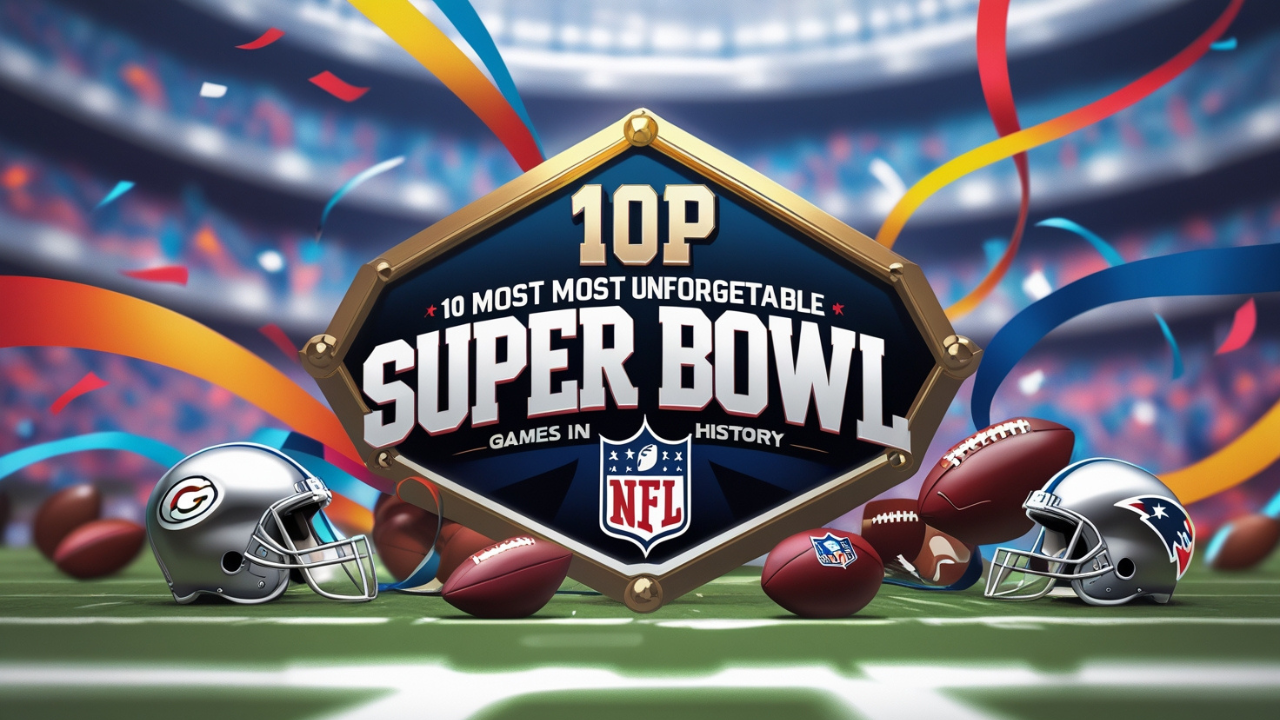The Super Bowl isn’t just a football game—it’s an annual celebration of athleticism, culture, and entertainment that captivates millions worldwide. Whether you’re a die-hard fan of the sport or someone who tunes in for the halftime show and commercials, the Super Bowl is a phenomenon like no other. As we gear up for Super Bowl LIX, let’s take a deep dive into how this colossal event has grown, transformed, and become the centerpiece of American culture.
The Birth of the Super Bowl
Imagine the 1960s, a time when football fans were divided between two rival leagues: the National Football League (NFL) and the American Football League (AFL). This intense rivalry ultimately led to an agreement to merge the leagues, and with it came the idea of an annual championship game to determine the ultimate winner. And so, the Super Bowl was born.
On January 15, 1967, history was made at the Los Angeles Memorial Coliseum. The first championship game—then humbly called the “AFL-NFL World Championship Game”—pitted the Green Bay Packers against the Kansas City Chiefs. Under the guidance of legendary coach Vince Lombardi, the Packers triumphed 35-10. Here’s a fun fact: tickets to this historic game cost an average of just $12, and yet, the stadium didn’t sell out. It’s hard to imagine now, given the astronomical ticket prices and massive global viewership today.
That first game may not have been the spectacle we know now, but it laid the foundation for what would become a cultural juggernaut.
What’s in a Name?
The term “Super Bowl” wasn’t part of the original plan. Lamar Hunt, owner of the Kansas City Chiefs, coined the term after being inspired by his children’s toy, the “Super Ball.” What began as a casual suggestion quickly caught on, and by the third championship game in 1969, the name “Super Bowl” was officially adopted.
To add an air of grandeur, Roman numerals were introduced with Super Bowl V in 1971. They’ve since become synonymous with the game, adding a timeless quality that reflects the prestige of the event.
Milestones and Iconic Moments
The Rise of Halftime Entertainment
The halftime show wasn’t always the grand production we see today. Early Super Bowls featured college marching bands and modest performances. The turning point came in 1993 when Michael Jackson took the stage during Super Bowl XXVII. His electrifying performance wasn’t just entertainment; it was a global event. Millions tuned in just for the halftime show, and advertisers quickly realized the potential of this prime slot.
Since then, the Super Bowl halftime show has hosted some of the biggest names in music: Beyoncé, Prince, Madonna, and Lady Gaga. Who can forget Prince performing “Purple Rain” in actual rain? These meticulously crafted shows are more than concerts; they’re cultural milestones.
Memorable Games
Over the years, the Super Bowl has delivered drama, heartbreak, and triumph. Here are some of the most unforgettable games:
- Super Bowl III (1969): Joe Namath famously guaranteed that his New York Jets would defeat the heavily favored Baltimore Colts. Against all odds, they pulled off a stunning 16-7 victory, legitimizing the AFL in the process.
- Super Bowl XXIII (1989): With just minutes left on the clock, Joe Montana led the San Francisco 49ers on a game-winning 92-yard drive, defeating the Cincinnati Bengals 20-16. It’s often cited as one of the greatest comebacks in NFL history.
- Super Bowl LI (2017): The New England Patriots orchestrated a miracle comeback, overturning a 28-3 deficit to defeat the Atlanta Falcons 34-28 in overtime. It’s the only Super Bowl to go into overtime and cemented Tom Brady’s legacy as one of the all-time greats.
- Super Bowl XLII (2008): David Tyree’s legendary “helmet catch” helped the New York Giants end the New England Patriots’ perfect season. It’s a play that’s forever etched in Super Bowl lore.
Cultural Impact
The Super Bowl isn’t just a sporting event; it’s a cultural phenomenon. From Whitney Houston’s stunning rendition of the national anthem in 1991 to commercials that have become as iconic as the game itself, the Super Bowl transcends sports.
Take, for instance, Apple’s “1984” commercial, which introduced the Macintosh computer and revolutionized advertising. Or Budweiser’s iconic Clydesdale horses, which have become a Super Bowl tradition in their own right. For many, these ads are as anticipated as the game, and companies compete fiercely to create the most memorable spots.
The Economics of the Super Bowl
Hosting the Super Bowl isn’t just an honor; it’s a massive economic boon. Cities see an influx of tourism, with hotels, restaurants, and local businesses reaping the rewards. The competition to host the game is fierce, with cities lobbying for years to earn the privilege.
The financial figures are staggering. In 1967, a 30-second commercial cost $42,000. Today, that same slot goes for over $7 million. Why? Because the Super Bowl consistently draws over 200 million viewers worldwide, making it one of the most-watched televised events in history.
And let’s not forget ticket prices. For Super Bowl LIX, the average ticket price is estimated at $9,500. The game has become a bucket-list event for fans, and those lucky enough to attend are willing to pay top dollar for the experience.
The Evolution of Technology
Think back to the first Super Bowl broadcast, which aired in black and white. Now, compare that to today’s 4K streaming with multiple camera angles and augmented reality graphics. The way we watch the Super Bowl has evolved dramatically, thanks to advancements in technology.
Instant replay, introduced in the 1960s, revolutionized the game by allowing referees to review key plays. Social media has further transformed the experience, enabling fans to share real-time reactions, memes, and commentary. Today, the Super Bowl isn’t just a game you watch; it’s an interactive experience.
Super Bowl Records and Trivia
- Most Championships: The New England Patriots and Pittsburgh Steelers are tied with six Super Bowl wins each.
- Most Appearances: Tom Brady holds the record for the most Super Bowl appearances by a player, with 10.
- Highest-Scoring Game: Super Bowl XXIX (1995) saw the San Francisco 49ers defeat the San Diego Chargers 49-26.
- Coldest Super Bowl: Super Bowl VI in 1972, held in New Orleans, had a kickoff temperature of 39°F.
- Longest Game: Super Bowl LI (2017) lasted 3 hours and 47 minutes, the only Super Bowl to go into overtime.
Looking Ahead to Super Bowl LIX
If you’re looking for all the latest details about Super Bowl LIX, including the date, venue, teams, and halftime show, check out our article NFL Super Bowl 2025: All the Facts You Need to Know.
Set to take place in the vibrant city of New Orleans, Super Bowl LIX promises to be a blend of thrilling football and rich culture. Known for its music, food, and festive spirit, New Orleans is the perfect host city. This will mark the city’s 11th time hosting the game, a testament to its enduring appeal.
On the field, the stakes couldn’t be higher as teams compete for the coveted Vince Lombardi Trophy. Off the field, Kendrick Lamar is set to deliver an explosive halftime performance that fans won’t soon forget. Whether you’re watching for the game, the music, or the commercials, Super Bowl LIX is shaping up to be an unforgettable event.
The Super Bowl’s journey from a humble championship game to a global phenomenon is nothing short of remarkable. It’s a celebration of excellence, a showcase of culture, and a unifying force that brings people together. As we look forward to Super Bowl LIX, one thing is clear: the Super Bowl isn’t just an event; it’s an experience, and its story is far from over.
What’s your favorite Super Bowl memory? Share it with us in the comments below!



